- Home
- J. K. Rowling
The Hogwarts Library Collection
The Hogwarts Library Collection Read online
CONTENTS
Fantastic Beasts and Where to Find Them
Quidditch Through the Ages
The Tales of Beedle the Bard
With thanks to J.K. Rowling for creating this book and so generously giving all her royalties from it to Comic Relief and Lumos
Foreword by the Author
Introduction
About This Book
What Is a Beast?
A Brief History of Muggle Awareness of Fantastic Beasts
Magical Beasts in Hiding
Why Magizoology Matters
Ministry of Magic Classifications
An A–Z of Fantastic Beasts
About the Author
In 2001, a reprint of the first edition of my book Fantastic Beasts and Where to Find Them was made available to Muggle readers. The Ministry of Magic consented to this unprecedented release to raise money for Comic Relief, a well-respected Muggle charity. I was permitted to reissue the book only on condition that a disclaimer was included, assuring Muggle readers that it was a work of fiction. Professor Albus Dumbledore agreed to provide a foreword that met the case and we were both delighted that the book raised so much money for some of the world’s most vulnerable people.
Following the declassification of certain secret documents kept at the Ministry of Magic, the wizarding world has recently learned a little more about the creation of Fantastic Beasts and Where to Find Them.
I am not yet in a position to tell the full story of my activities during the two decades that Gellert Grindelwald terrorised the wizarding world. As more documents become declassified over the coming years, I will be freer to speak openly about my role in that dark period in our history. For now, I shall confine myself to correcting a few of the more glaring inaccuracies in recent press reports.
In her recent biography Man or Monster? The TRUTH About Newt Scamander, Rita Skeeter states that I was never a Magizoologist, but a Dumbledore spy who used Magizoology as a ‘cover’ to infiltrate the Magical Congress of the United States of America (MACUSA) in 1926.
This, as anyone who lived through the 1920s will know, is an absurd claim. No undercover wizard would have chosen to pose as a Magizoologist in that period. An interest in magical beasts was considered dangerous and suspect, and taking a case full of such creatures into a major city was, in retrospect, a serious mistake.
I went to America to free a trafficked Thunderbird, which was quite risky enough, given that MACUSA had a curse-to-kill policy on all magical creatures at the time. I am proud to say that one year after my visit, President Seraphina Picquery instituted a Protective Order on Thunderbirds, an edict she would eventually extend to all magical creatures. (At President Picquery’s request, I made no mention of the more important American magical creatures in the first edition of Fantastic Beasts, because she wished to deter wizarding sightseers. As the American wizarding community was subject to greater persecution at that time than their European counterparts, and given that I had inadvertently contributed to a serious breach of the International Statute of Secrecy in New York, I agreed. I have reinstated them in their rightful place in this new edition.)
It would take months to contradict every other wild assertion in Miss Skeeter’s book. I shall simply add that, far from being ‘the love rat who left Seraphina Picquery heartbroken’, the President made it clear that if I didn’t leave New York voluntarily and speedily, she would take drastic steps to eject me.
It is true that I was the first person ever to capture Gellert Grindelwald and also true that Albus Dumbledore was something more than a schoolteacher to me. More than this I cannot say without fear of breaching the Official Magical Secrets Act or, more importantly, the confidences that Dumbledore, most private of men, placed in me.
Fantastic Beasts and Where to Find Them was a labour of love in more ways than one. As I look back over this early book, I relive memories that are etched on every page, though invisible to the reader. It is my fondest hope that a new generation of witches and wizards will find in its pages fresh reason to love and protect the incredible beasts with whom we share magic.
ABOUT THIS BOOK
Fantastic Beasts and Where to Find Them represents the fruit of many years’ travel and research. I look back across the years to the seven-year-old wizard who spent hours in his bedroom dismembering Horklumps and I envy him the journeys to come: from darkest jungle to brightest desert, from mountain peak to marshy bog, that grubby Horklump-encrusted boy would track, as he grew up, the beasts described in the following pages. I have visited lairs, burrows and nests across five continents, observed the curious habits of magical beasts in a hundred countries, witnessed their powers, gained their trust and, on occasion, beaten them off with my travelling kettle.
The first edition of Fantastic Beasts was commissioned back in 1918 by Mr Augustus Worme of Obscurus Books, who was kind enough to ask me whether I would consider writing an authoritative compendium of magical creatures for his publishing house. I was then but a lowly Ministry of Magic employee and leapt at the chance both to augment my pitiful salary of two Sickles a week and to spend my holidays travelling the globe in search of new magical species. The rest is publishing history.
This Introduction is intended to answer a few of the most frequently asked questions that have been arriving in my weekly postbag ever since this book was first published in 1927. The first of these is that most fundamental question of all – what is a ‘beast’?
WHAT IS A BEAST?
The definition of a ‘beast’ has caused controversy for centuries. Though this might surprise some first-time students of Magizoology, the problem might come into clearer focus if we take a moment to consider three types of magical creature.
Werewolves spend most of their time as humans (whether wizard or Muggle). Once a month, however, they transform into savage, four-legged beasts of murderous intent and no human conscience.
The centaurs’ habits are not human-like; they live in the wild, refuse clothing, prefer to live apart from wizards and Muggles alike and yet have intelligence equal to theirs.
Trolls bear a humanoid appearance, walk upright, may be taught a few simple words and yet are less intelligent than the dullest unicorn and possess no magical powers in their own right except for their prodigious and unnatural strength.
We now ask ourselves: which of these creatures is a ‘being’ – that is to say, a creature worthy of legal rights and a voice in the governance of the magical world – and which is a ‘beast’?
Early attempts at deciding which magical creatures should be designated ‘beasts’ were extremely crude.
Burdock Muldoon, Chief of the Wizards’ Council1 in the fourteenth century, decreed that any member of the magical community that walked on two legs would henceforth be granted the status of ‘being’, all others to remain ‘beasts’. In a spirit of friendship he summoned all ‘beings’ to meet with the wizards at a summit to discuss new magical laws and found to his intense dismay that he had miscalculated. The meeting hall was crammed with goblins who had brought with them as many two-legged creatures as they could find. As Bathilda Bagshot tells us in A History of Magic:
Little could be heard over the squawking of the Diricawls, the moaning of the Augureys and the relentless, piercing song of the Fwoopers. As wizards and witches attempted to consult the papers before them, sundry pixies and fairies whirled around their heads, giggling and jabbering. A dozen or so trolls began to smash apart the chamber with their clubs, while hags glided about the place in search of children to eat. The Council Chief stood up to open the meeting, slipped on a pile of Porlock dung and ran cursing from the hall.
As we see, the mere possession of two legs was no guar
antee that a magical creature could or would take an interest in the affairs of wizard government. Embittered, Burdock Muldoon forswore any further attempts to integrate non-wizard members of the magical community into the Wizards’ Council.
Muldoon’s successor, Madame Elfrida Clagg, attempted to redefine ‘beings’ in the hope of creating closer ties with other magical creatures. ‘Beings’, she declared, were those who could speak the human tongue. All those who could make themselves understood to Council members were therefore invited to join the next meeting. Once again, however, there were problems. Trolls who had been taught a few simple sentences by the goblins proceeded to destroy the hall as before. Jarveys raced around the Council’s chair legs, tearing at as many ankles as they could reach. Meanwhile a large delegation of ghosts (who had been barred under Muldoon’s leadership on the grounds that they did not walk on two legs, but glided) attended but left in disgust at what they later termed ‘the Council’s unashamed emphasis on the needs of the living as opposed to the wishes of the dead’. The centaurs, who under Muldoon had been classified as ‘beasts’ and were now under Madame Clagg defined as ‘beings’, refused to attend the Council in protest at the exclusion of the merpeople, who were unable to converse in anything except Mermish while above water.
Not until 1811 were definitions found that most of the magical community found acceptable. Grogan Stump, the newly appointed Minister for Magic, decreed that a ‘being’ was ‘any creature that has sufficient intelligence to understand the laws of the magical community and to bear part of the responsibility in shaping those laws’.2 Troll representatives were questioned in the absence of goblins and judged not to understand anything that was being said to them; they were therefore classified as ‘beasts’ despite their two-legged gait; merpeople were invited through translators to become ‘beings’ for the first time; fairies, pixies and gnomes, despite their humanoid appearance, were placed firmly in the ‘beast’ category.
Naturally, the matter has not rested there. We are all familiar with the extremists who campaign for the classification of Muggles as ‘beasts’; we are all aware that the centaurs have refused ‘being’ status and requested to remain ‘beasts’;3 werewolves, meanwhile, have been shunted between the Beast and Being divisions for many years; at the time of writing there is an office for Werewolf Support Services at the Being Division whereas the Werewolf Registry and Werewolf Capture Unit fall under the Beast Division. Several highly intelligent creatures are classified as ‘beasts’ because they are incapable of overcoming their own brutal natures. Acromantulas and Manticores are capable of intelligent speech but will attempt to devour any human that goes near them. The sphinx talks only in puzzles and riddles, and is violent when given the wrong answer.
Wherever there is continued uncertainty about the classification of a beast in the following pages, I have noted it in the entry for that creature.
Let us now turn to the one question that witches and wizards ask more than any other when the conversation turns to Magizoology: why don’t Muggles notice these creatures?
* * *
1. The Wizards’ Council preceded the Ministry of Magic.
2. An exception was made for the ghosts, who asserted that it was insensitive to class them as ‘beings’ when they were so clearly ‘has-beens’. Stump therefore created the three divisions of the Department for the Regulation and Control of Magical Creatures that exist today: the Beast Division, the Being Division and the Spirit Division.
3. The centaurs objected to some of the creatures with whom they were asked to share ‘being’ status, such as hags and vampires, and declared that they would manage their own affairs separately from wizards. A year later the merpeople made the same request. The Ministry of Magic accepted their demands reluctantly. Although a Centaur Liaison Office exists in the Beast Division of the Department for the Regulation and Control of Magical Creatures, no centaur has ever used it. Indeed, ‘being sent to the Centaur Office’ has become an in-joke at the Department and means that the person in question is shortly to be fired.
A BRIEF HISTORY OF MUGGLE AWARENESS OF FANTASTIC BEASTS
Astonishing though it may seem to many wizards, Muggles have not always been ignorant of the magical and monstrous creatures that we have worked so long and hard to hide. A glance through Muggle art and literature of the Middle Ages reveals that many of the creatures they now believe to be imaginary were then known to be real. The dragon, the griffin, the unicorn, the phoenix, the centaur – these and more are represented in Muggle works of that period, though usually with almost comical inexactitude.
However, a closer examination of Muggle bestiaries of that period demonstrates that most magical beasts either escaped Muggle notice completely or were mistaken for something else. Examine this surviving fragment of manuscript, written by one Brother Benedict, a Franciscan monk from Worcestershire:
Todaye while travailing in the Herbe Garden, I did push aside the basil to discover a Ferret of monstrous size. It did not run nor hide as Ferrets are wont to do, but leapt upon me, throwing me backwards upon the grounde and crying with most unnatural fury, ‘Get out of it, baldy!’ It did then bite my nose so viciously that I did bleed for several Hours. The Friar was unwillinge to believe that I had met a talking Ferret and did ask me whether I had been supping of Brother Boniface’s Turnip Wine. As my nose was still swollen and bloody I was excused Vespers.
Evidently our Muggle friend had unearthed not a ferret, as he supposed, but a Jarvey, most likely in pursuit of its favourite prey, gnomes.
Imperfect understanding is often more dangerous than ignorance, and the Muggles’ fear of magic was undoubtedly increased by their dread of what might be lurking in their herb gardens. Muggle persecution of wizards at this time was reaching a pitch hitherto unknown and sightings of such beasts as dragons and Hippogriffs were contributing to Muggle hysteria.
It is not the aim of this work to discuss the dark days that preceded the wizards’ retreat into hiding.4 All that concerns us here is the fate of those fabulous beasts that, like ourselves, would have to be concealed if Muggles were ever to be convinced there was no such thing as magic.
The International Confederation of Wizards argued the matter out at their famous summit meeting of 1692. No fewer than seven weeks of sometimes acrimonious discussion between wizards of all nationalities were devoted to the troublesome question of magical creatures. How many species would we be able to conceal from Muggle notice and which should they be? Where and how should we hide them? The debate raged on, some creatures oblivious to the fact that their destiny was being decided, others contributing to the debate.5
At last agreement was reached.6 Twenty-seven species, ranging in size from dragons to Bundimuns, were to be hidden from Muggles so as to create the illusion that they had never existed outside the imagination. This number was increased over the following century, as wizards became more confident in their methods of concealment. In 1750, Clause 73 was inserted in the International Statute of Wizarding Secrecy, to which wizard ministries worldwide conform today:
Each wizarding governing body will be responsible for the concealment, care and control of all magical beasts, beings and spirits dwelling within its territory’s borders. Should any such creature cause harm to, or draw the notice of, the Muggle community, that nation’s wizarding governing body will be subject to discipline by the International Confederation of Wizards.
* * *
4. Anyone interested in a full account of this particularly bloody period of wizarding history should consult A History of Magic by Bathilda Bagshot (Little Red Books, 1947).
5. Delegations of centaurs, merpeople and goblins were persuaded to attend the summit.
6. Except by the goblins.
MAGICAL BEASTS IN HIDING
It would be idle to deny that there have been occasional breaches of Clause 73 since it was first put in place. Older British readers will remember the Ilfracombe Incident of 1932, when a rogue Welsh Green dragon swooped dow
n upon a crowded beach full of sunbathing Muggles. Fatalities were mercifully prevented by the brave actions of a holidaying wizarding family (subsequently awarded Orders of Merlin, First Class), when they immediately performed the largest batch of Memory Charms this century on the inhabitants of Ilfracombe, thus narrowly averting catastrophe.7
The International Confederation of Wizards has had to fine certain nations repeatedly for contravening Clause 73. Tibet and Scotland are two of the most persistent offenders. Muggle sightings of the yeti have been so numerous that the International Confederation of Wizards felt it necessary to station an International Task Force in the mountains on a permanent basis. Meanwhile the world’s largest kelpie continues to evade capture in Loch Ness and appears to have developed a positive thirst for publicity.
These unfortunate mishaps notwithstanding, we wizards may congratulate ourselves on a job well done. There can be no doubt that the overwhelming majority of present-day Muggles refuse to believe in the magical beasts their ancestors so feared. Even those Muggles who do notice Porlock droppings or Streeler trails – it would be foolish to suppose that all traces of these creatures can be hidden – appear satisfied with the flimsiest non-magical explanation.8 If any Muggle is unwise enough to confide in another that he has spotted a Hippogriff winging its way north, he is generally believed to be drunk or a ‘loony’. Unfair though this may seem on the Muggle in question, it is nevertheless preferable to being burnt at the stake or drowned in the village duckpond.
So how does the wizarding community hide fantastic beasts?
Luckily, some species do not require much wizarding assistance in avoiding the notice of Muggles. Creatures such as the Tebo, the Demiguise and the Bowtruckle have their own highly effective means of camouflage and no intervention by the Ministry of Magic has ever been necessary on their behalf. Then there are those beasts that, due to cleverness or innate shyness, avoid contact with Muggles at all costs – for instance, the unicorn, the Mooncalf and the centaur. Other magical creatures inhabit places inaccessible to Muggles – one thinks of the Acromantula, deep in the uncharted jungle of Borneo, and the phoenix, nesting high on mountain peaks unreachable without the use of magic. Finally, and most commonly, we have beasts that are too small, too speedy or too adept at passing for mundane animals to attract a Muggle’s attention – Chizpurfles, Billywigs and Crups fall into this category.

 Harry Potter and the Philosophers Stone
Harry Potter and the Philosophers Stone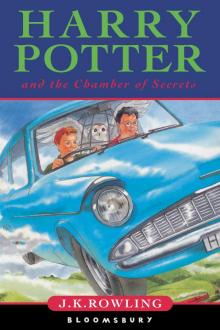 Harry Potter and the Chamber of Secrets
Harry Potter and the Chamber of Secrets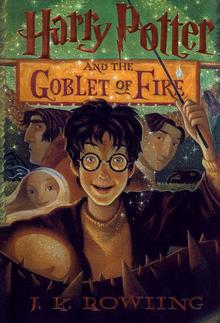 Harry Potter and the Goblet of Fire
Harry Potter and the Goblet of Fire Harry Potter and the Deathly Hallows
Harry Potter and the Deathly Hallows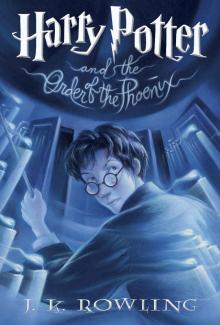 Harry Potter and the Order of the Phoenix
Harry Potter and the Order of the Phoenix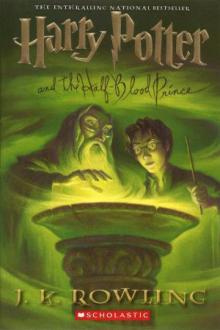 Harry Potter and the Half-Blood Prince
Harry Potter and the Half-Blood Prince Harry Potter and the Prisoner of Azkaban
Harry Potter and the Prisoner of Azkaban Fantastic Beasts and Where to Find Them
Fantastic Beasts and Where to Find Them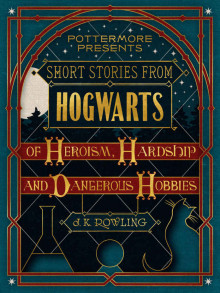 Short Stories from Hogwarts of Heroism, Hardship and Dangerous Hobbies
Short Stories from Hogwarts of Heroism, Hardship and Dangerous Hobbies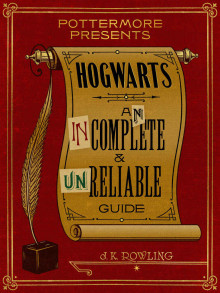 Hogwarts: An Incomplete and Unreliable Guide
Hogwarts: An Incomplete and Unreliable Guide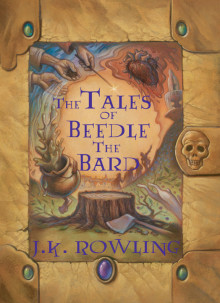 The Tales of Beedle the Bard
The Tales of Beedle the Bard The Casual Vacancy
The Casual Vacancy Harry Potter and the Cursed Child
Harry Potter and the Cursed Child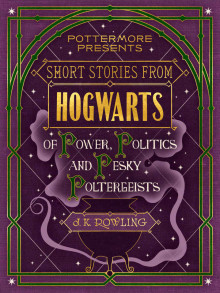 Short Stories from Hogwarts of Power, Politics and Pesky Poltergeists
Short Stories from Hogwarts of Power, Politics and Pesky Poltergeists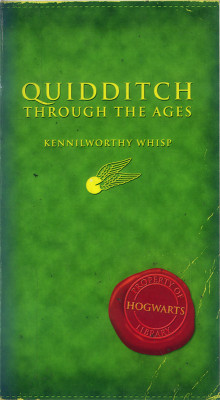 Quidditch Through the Ages
Quidditch Through the Ages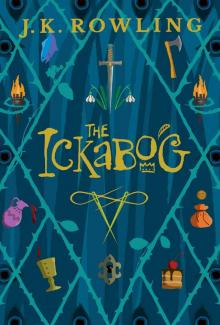 The Ickabog
The Ickabog![Fantastic Beasts, The Crimes of Grindelwald [UK] Read online](http://i1.bookreadfree.com/i/03/19/fantastic_beasts_the_crimes_of_grindelwald_uk_preview.jpg) Fantastic Beasts, The Crimes of Grindelwald [UK]
Fantastic Beasts, The Crimes of Grindelwald [UK]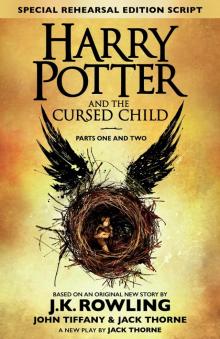 Harry Potter and the Cursed Child: Parts One and Two
Harry Potter and the Cursed Child: Parts One and Two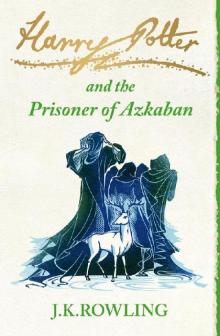 The Prisoner of Azkaban
The Prisoner of Azkaban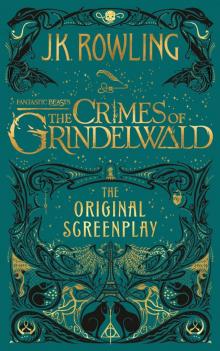 Fantastic Beasts: The Crimes of Grindelwald
Fantastic Beasts: The Crimes of Grindelwald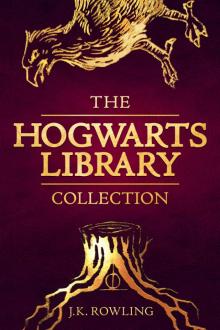 The Hogwarts Library Collection
The Hogwarts Library Collection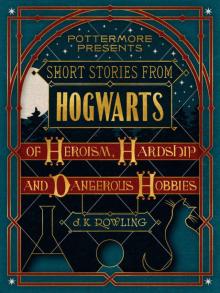 Short Stories from Hogwarts of Heroism, Hardship and Dangerous Hobbies (Kindle Single) (Pottermore Presents)
Short Stories from Hogwarts of Heroism, Hardship and Dangerous Hobbies (Kindle Single) (Pottermore Presents)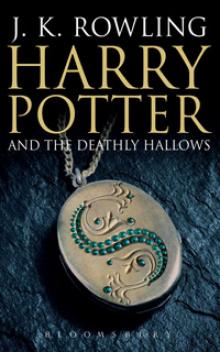 Harry Potter and the Deathly Hallows hp-7
Harry Potter and the Deathly Hallows hp-7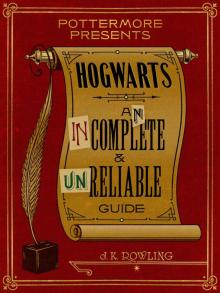 Hogwarts: An Incomplete and Unreliable Guide (Kindle Single) (Pottermore Presents)
Hogwarts: An Incomplete and Unreliable Guide (Kindle Single) (Pottermore Presents)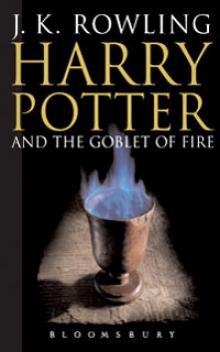 Harry Potter and the Goblet of Fire hp-4
Harry Potter and the Goblet of Fire hp-4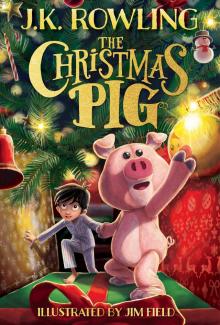 The Christmas Pig
The Christmas Pig Harry Potter and the Sorcerer's Stone
Harry Potter and the Sorcerer's Stone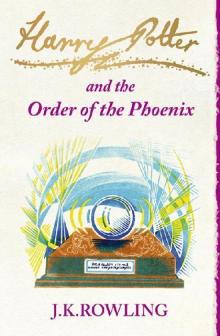 The Order of the Phoenix
The Order of the Phoenix Harry Potter and the Prisoner of Azkaban hp-3
Harry Potter and the Prisoner of Azkaban hp-3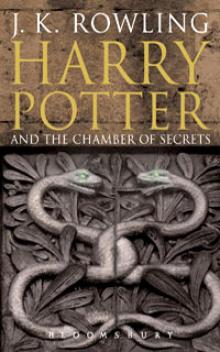 Harry Potter and the Chamber of Secrets hp-2
Harry Potter and the Chamber of Secrets hp-2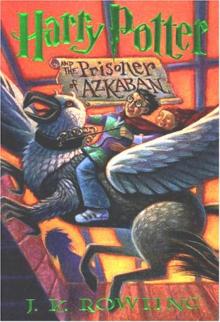 HP 3 - Harry Potter and the Prisoner of Azkaban
HP 3 - Harry Potter and the Prisoner of Azkaban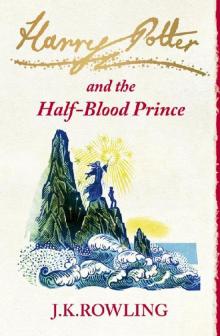 The Half-Blood Prince
The Half-Blood Prince The Hogwarts Collection
The Hogwarts Collection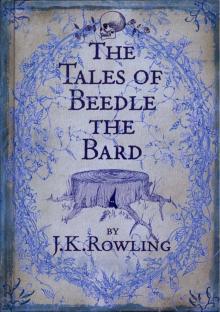 Tales of Beedle the Bard
Tales of Beedle the Bard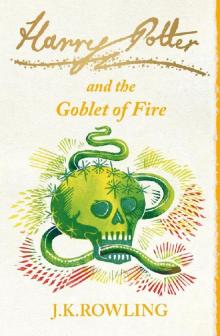 The Goblet of Fire
The Goblet of Fire Harry Potter and the Half-Blood Prince hp-6
Harry Potter and the Half-Blood Prince hp-6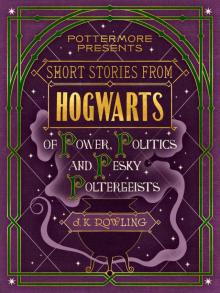 Short Stories from Hogwarts of Power, Politics and Pesky Poltergeists (Kindle Single) (Pottermore Presents)
Short Stories from Hogwarts of Power, Politics and Pesky Poltergeists (Kindle Single) (Pottermore Presents)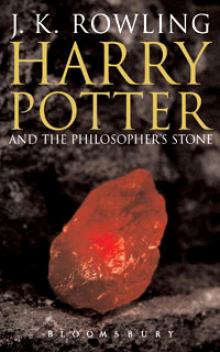 Harry Potter and the Sorcerer's Stone hp-1
Harry Potter and the Sorcerer's Stone hp-1